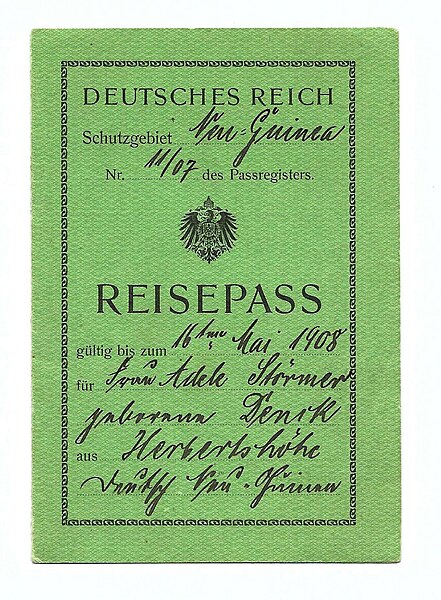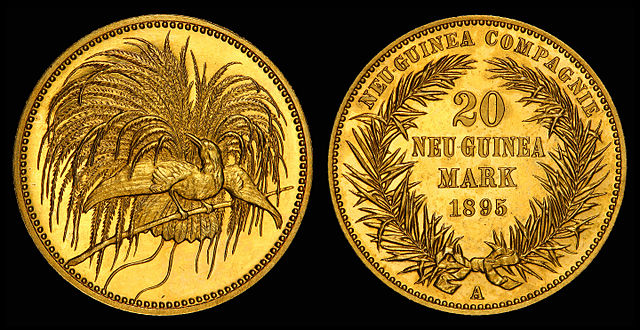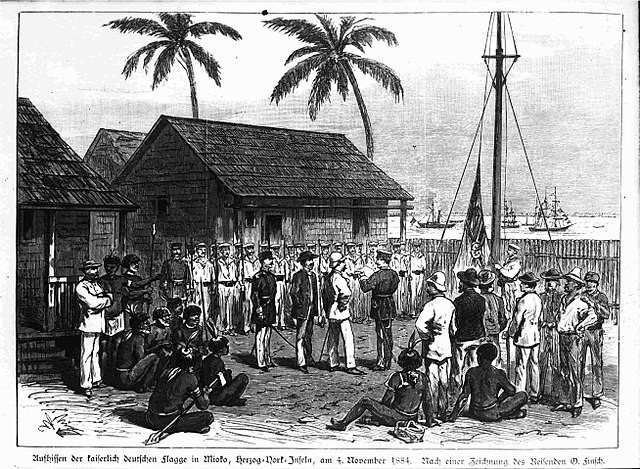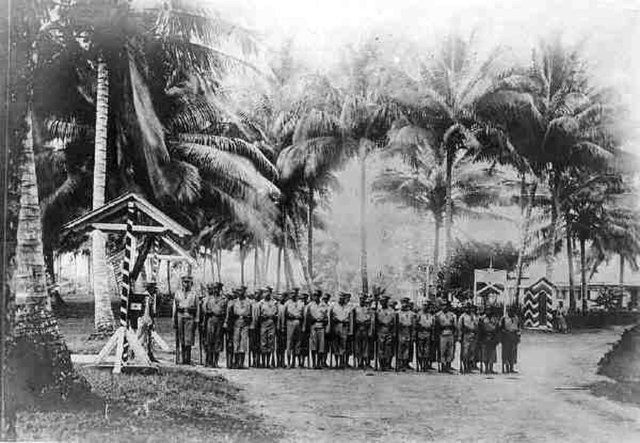Hermann Philipp Detzner was a German engineer and surveyor, who served as an officer in the German colonial security force (Schutztruppe) in Kamerun (Cameroon) and German New Guinea. He gained fame for evading capture after Australian troops invaded German New Guinea at the start of World War I.
German hotel at Herbertshöhe (Kokopo) on New Pomerania, circa 1912. The small German colony in Herbertshöhe had capitulated to the Australian troops by mid-September 1914.
This pre-war German postcard from New Guinea depicts the exotic locale of the German protectorate. Widely distributed cards such as this, whether sold as post cards or in cigarette packages, often intensified interest in the colonial enterprise by offering an exciting and evocative visual image.
An illustration in Detzner's book depicted a characterization of the native New Guineans he encountered in his adventures; these were the people he called "the skirted ones".
German New Guinea consisted of the northeastern part of the island of New Guinea and several nearby island groups and was the first part of the German colonial empire. The mainland part of the territory, called Kaiser-Wilhelmsland, became a German protectorate in 1884. Other island groups were added subsequently. The Bismarck Archipelago, and the North Solomon Islands were declared a German protectorate in 1885. The Caroline Islands, Palau, and the Mariana Islands were bought from Spain in 1899. German New Guinea annexed the formerly separate German Protectorate of Marshall Islands, which also included Nauru, in 1906. German Samoa, though part of the German colonial empire, was not part of German New Guinea.
1907 New Guinea passport signed by the governor Albert Hahl
1895 20 mark gold coin issued by the German New Guinea Company
Hoisting of the German flag at Mioko in 1884
Recruits from the local population (here probably Tolai, from East New Britain) during a drill







